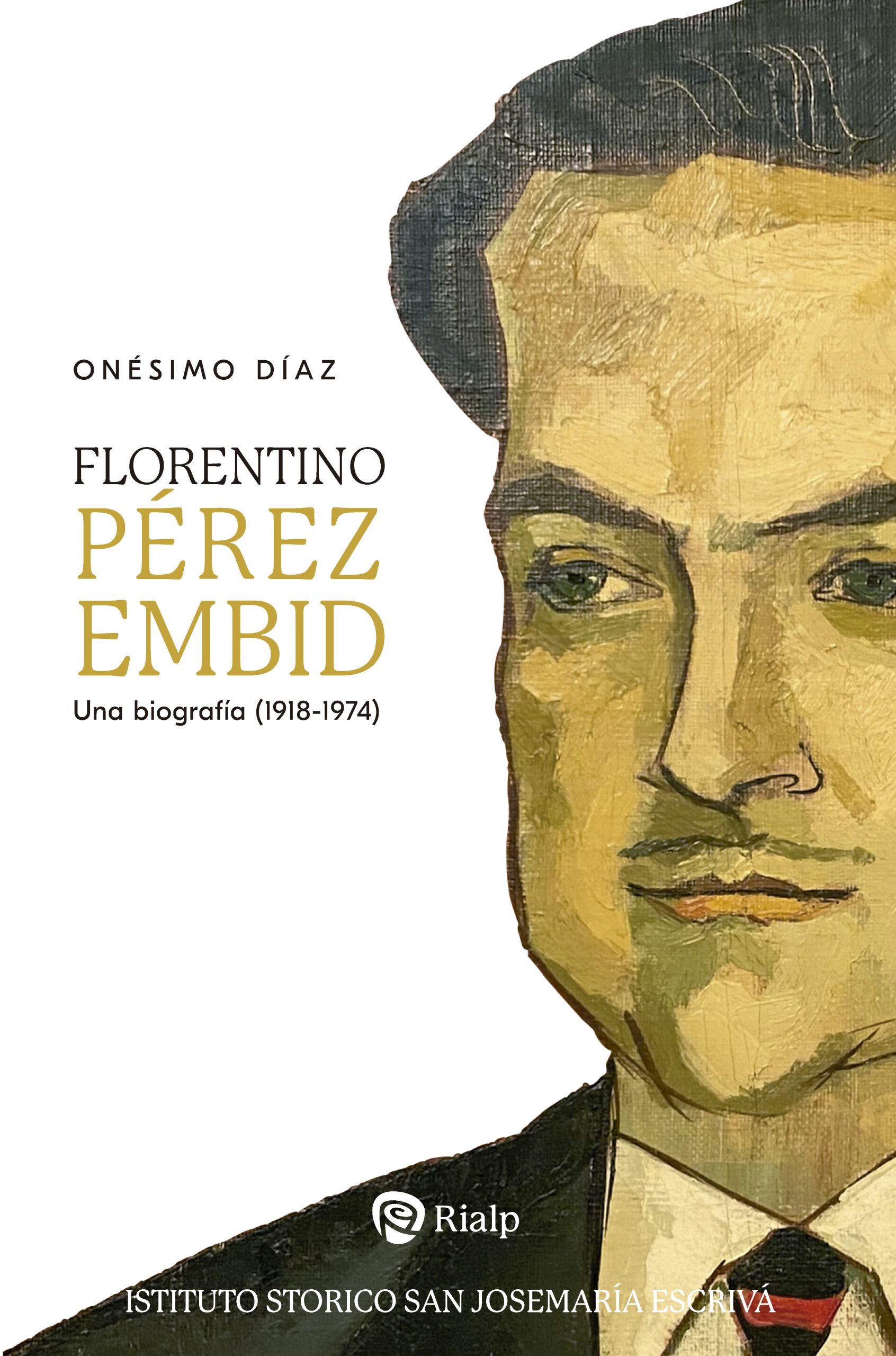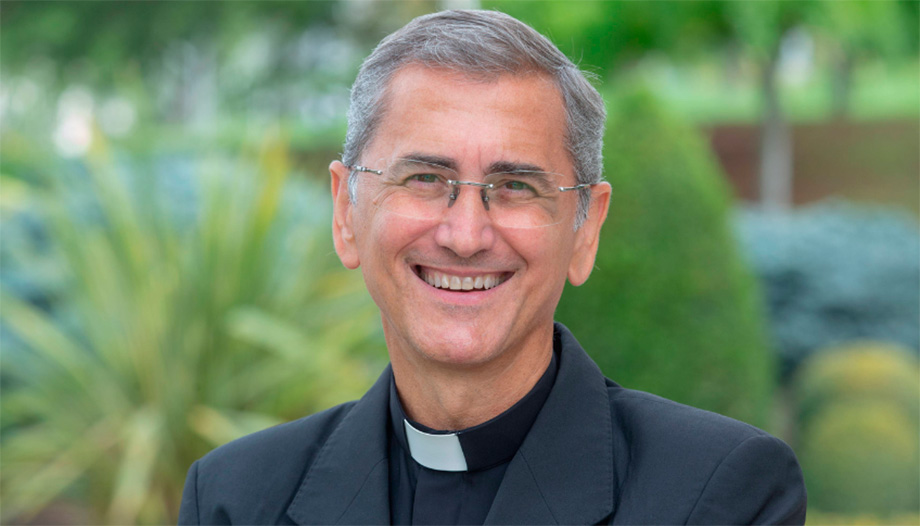Onésimo Díaz is deputy director of Josemaría Escrivá Study Center and professor at the University of Navarra. He has just published a new book entitled Florentino Pérez-Embid. A biography (1918-1974).
In it he analyzes in detail his career and contributions in the academic, cultural and political fields of 20th century Spain. This new biography, published by Rialp, awakens the reader's curiosity for a multifaceted character who combines a passion for books, culture, art, teaching and politics.
In your book you define Florentino Pérez-Embid as a multifaceted character, playing intellectual, political and managerial roles. Do you consider that these different aspects of his life are somehow intertwined throughout his career?
-Florentino Pérez-Embid is a difficult character to catalog and define, because he has done so many things in a few years of life, he is a somewhat disconcerting man.
As a young man he aspired to become a university professor and prepared for it, obtaining a chair in Seville and, later, in Madrid. However, despite his dedication to teaching and research, he discovered that politics was even more attractive to him than academic life, although he never stopped being a professor and researcher.
Throughout his life he continued to teach, participate in conferences and publish books and articles in his specialty, which was the history of the Americas. He also dedicated a significant part of his career to cultural management.
What intellectual influences did you receive during your formative academic years?
-Intellectual influences during those years were fundamental in shaping his thinking and academic orientation. Mainly, Pérez-Embid was deeply influenced by prominent Spanish historians and thinkers, such as Menéndez Pelayo and Ramiro de Maeztu, the latter being the one who proposed the concept of hispanidad. Pérez-Embid embraced this idea, arguing that Spain should maintain a close relationship with Latin America, since factors such as language, religion and customs unite Spaniards with Latin Americans.
During the 1960s, Pérez-Embid made two trips to the American continent, an experience that deepened his understanding of the unity of Spanish culture with numerous American countries. These trips had a dual purpose: partly as a professor of history, with the aim of giving lectures and promoting academic exchange; and partly as director of Editorial Rialp, with the aim of promoting books in countries such as Mexico and Argentina, where the publishing house had agreements.
Beyond the influences received from Menéndez Pelayo and Ramiro de Maeztu, throughout his intellectual and academic career, Florentino Pérez-Embid forged his own thinking and historiographic approach, becoming an Americanist historian of certain prestige.
Among his most notable achievements is his Christopher Columbus biographywhich has become a classic of historiography and continues to be published today. In addition, his publications of books and articles on the history of the Americas have been valuable contributions that have enriched subsequent research by other historians.
How does Florentino Pérez-Embid join Opus Dei?
-He discovers the Opus Dei Around that time, a professor, also an Americanist, Vicente Rodríguez Casado, arrived in Seville. He was one of the first members of Opus Dei.
The friendship between Pérez-Embid and Rodríguez Casado blossomed during the 1942-1943 academic year, when Florentino was a young professor who had not yet defended his doctoral thesis. In the following summer, Rodríguez Casado organized a course for Spanish and Portuguese students at La Rábida, in the province of Huelva, in southern Andalusia. These courses focused on deepening Hispanic American studies and during this event, Pérez-Embid had the opportunity to engage in conversations with Rodríguez Casado. During these conversations, Rodriguez Casado spoke to him about Opus Dei and the book "The Way," written by Josemaria Escriva.
This encounter with the ideas of Opus Dei was a significant discovery in Pérez-Embid's life and nourished his interior life. So much so that that same summer, he wrote a letter to the founder expressing his attraction to the spirit of Opus Dei, which invites one to see beauty in the everyday, and requested admission as a numerary.
Later, in 1945, Pérez-Embid moved to Madrid and settled in the Colegio Mayor on Diego de León Street. For the next two years, he lived with St. Josemaría, who later moved to Rome. In Madrid, Florentino Pérez-Embid spent some time in formation, participating in classes and activities of Opus Dei. At the same time, he continued his doctoral studies and prepared himself for a university professorship. In addition, at that time, he began to work for the magazine Arbor.
What was your participation in the movement? Arbor?
-Florentino Pérez-Embid had an outstanding participation in the magazine Arborwhich to this day continues to be published by the Consejo Superior de Investigaciones Científicas (CSIC) and enjoys prestige both in Spain and internationally. His involvement began in 1944, when he was still very young, contributing book reviews.
Between 1947 and 1953, Pérez-Embid served as the magazine's secretary, under the direction of his friend Rafael Calvo Serer. During this period, they succeeded in expanding the influence of Arbor not only in Spain, but also in several European and American countries, making it a leading publication in the humanities, especially in the field of history.
A notable aspect of their participation in Arbor was their use of the magazine as a monarchist platform. They invited intellectuals, philosophers, historians and sociologists to write about the monarchy in different historical contexts and countries, advocating the monarchy and thus showing their support for the pretender to the throne, Juan de Borbón. However, this political activity aroused the suspicions of both the CSIC and the Franco regime itself. As a result, in 1953, Franco decided to remove Pérez-Embid and Rafael Calvo Serer from their positions in the CSIC. Arbormarking the end of his direct influence on the magazine.


Florentino Pérez-Embid. A biography
Why did Pérez Embid get involved in the political affairs of his time?
-At first, when he entered politics, as General Director of Information, his work was related to the promotion of culture in Spain, he gave lectures in Madrid and other cities. Those tasks as a professor interested him a lot.
His commitment to culture and cultural promotion was further reflected in his position as director general of Fine Arts, where he was able to focus on the field of art, which had been one of his passions since his student days. From that position, Pérez-Embid made arrangements for Picasso's Guernica to return to Spain.
Politics became an important facet of Pérez-Embid's life. He was the first person from Opus Dei to enter politics, and he did so with the belief that it was a way to serve his country and contribute to the common good. As he took his first steps into politics, he realized that he had a natural affinity with this field and developed a strong interest. His ambition to become a minister reflected his desire to have a significant impact on the direction of his country. Although he did not succeed in becoming a minister, he was offered the position of Minister of Information and Tourism shortly before his death, but declined due to his deteriorating health. He passed away one month after this offer.
What was the biggest challenge you encountered when researching and writing the biography of Florentino Pérez-Embid?
-One of the biggest challenges I found when researching and writing Florentino Pérez-Embid's biography was the immense amount of documents and personal material he left behind. His personal archive consists of more than 160 boxes filled with papers, letters, postcards, documents and photographs. Fortunately, Pérez-Embid was meticulous and had not discarded any paper or memento throughout his life. That is really a great advantage to be able to write a biography.
Once I immersed myself in this extensive archive, I realized that I needed to supplement the information with personal accounts and recollections of Pérez-Embid's family, friends, colleagues and disciples. Through interviews and conversations, I was able to gather details and anecdotes that were not present in the personal archive. These additional testimonies shed new light on Pérez-Embid's life and personality, providing a more complete and enriching perspective for my research.
The task of gathering these stories and anecdotes from those who had lived with such a historic and charismatic character as Pérez-Embid became a rewarding process. Each interview and each shared memory contributed to build a more authentic and realistic image of this remarkable character.












